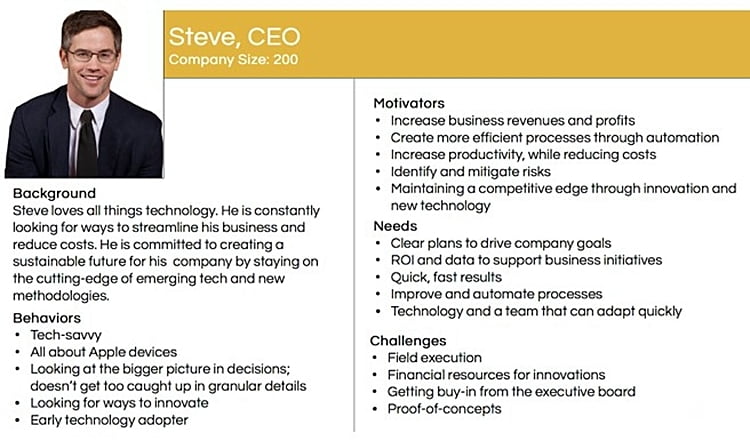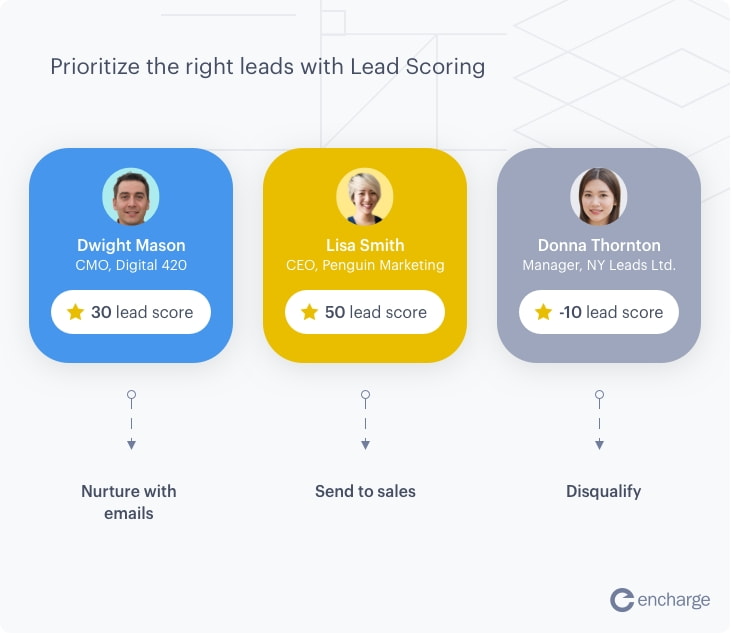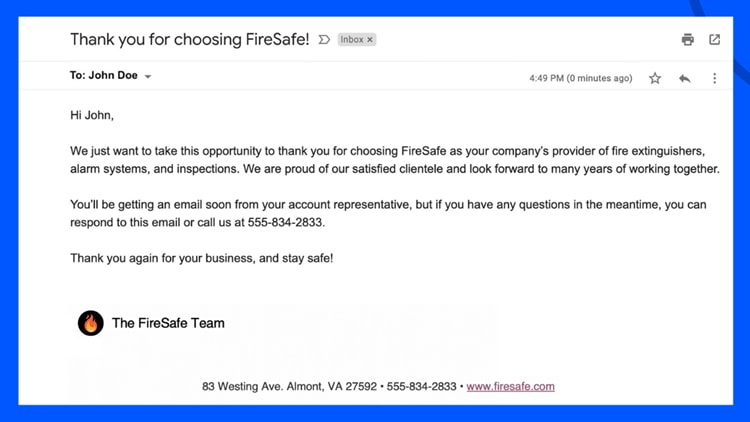The B2B sales pipeline is a game-changer, because it helps identify target prospects, build tailored messages, and facilitate follow up on leads in ways that save you time, money, and resources.
Sales pipelines allow companies to communicate with relevant customers and guide them through different phases of their journey until a purchase occurs.
This article will provide a step-by-step guide on how to build a B2B sales pipeline for your company.
But first: What is a B2B sales pipeline?
A B2B sales pipeline is a visual representation of what sales and marketing teams do at every stage of the sales process.
In other words, it is how you deal with your potential customers in their buyer's journey from first interest to final purchase across all channels.
The following infographic shows a sample sales pipeline and corresponding sales funnel stages.
A sales funnel differs from a sales pipeline in that it shows the stages that customers go through in their journey to purchase (and beyond). Note, too, that this representation is only an example. The B2B sales pipeline stages may vary depending on the industry/business.

Ultimately, a sales pipeline is a road map for B2B sales teams. It allows them to prioritize potential prospects and optimize conversion opportunities.
A sales pipeline also helps companies anticipate revenue and monitor sales goals. It enables B2B businesses to prioritize their resources and allocate them where they will have the greatest impact.
Three Standard Stages of a B2B Sales Pipeline
Although the number of stages in a B2B sales pipeline may vary per business, a standard B2B sales pipeline always includes the following three stages.
1. Lead Qualification
Lead qualification involves assessing the quality and potential of each lead to determine whether they are a good fit for the products or services a business sells. This stage helps you prioritize your efforts and resources on those most likely to convert into paying customers.
You can perform lead qualification by clearly defining your ideal customer profile, implementing a solid communication strategy, and developing a lead scoring system.
Clearly defining your ideal customer profile is crucial to ensuring that your marketing teams are targeting the right B2B prospects. You must understand the characteristics and demographics of your ideal customer, including their industry, company size, job title, buying journey, and specific pain points.

Source: Superoffice.com
You can collect that information by conducting market research, analyzing your current customer database, and collecting feedback from your sales reps.
A solid communication strategy is also crucial for scoring and qualifying leads. It helps organizations gather real-time data about leads' requirements, interests, and problem areas.
However, ensure you have the right tools in place. Think carefully about how your B2B potential customers like to be contacted. You might consider a hosted phone system, email, or video conferencing. Choosing the right method allows you to gather the data you need for accurate scoring and qualifying without irking prospective customers.
Then, you can develop a lead scoring system, which involves assigning a numerical value to each potential buyer based on their level of interest, engagement, and fit with your ideal customer profile.
Leads can be categorize and prioritized as Marketing-qualified leads (MQL) and Sales-qualified leads(SQL); often, the former are early-stage leads, whereas the latter are those who show higher intent and are more likely to convert into paying customers.

Source: Encharge
Your sales reps can use the lead scoring system to decide what happens to your leads.
For example, MQLs can be nurtured through targeted content addressing their pain points and challenges. Doing so helps ensure that MQLs become SQLs. On the other hand, SQLs can receive more personalized offers from your sales team, focusing on closing the deal and converting them into loyal customers.
We'll talk more about lead nurturing in the next section. But just take a look at the chart above to get an idea of how the lead scoring system is used.
2. Lead Nurturing
Lead nurturing keeps customers interested in and informed about your business. You essentially foster meaningful connections by offering valuable content. The aim is to remain at the forefront of the prospect's mind so that when they're ready to make a purchase, they'll think of you.
Lead nurturing can be done through various channels like email marketing and targeted advertisements.
You can even nurture leads through strategic events. For example, you may find out that a lead your team identified and qualified is attending an event on digital advertising trends. You can attend the same event and interact with your prospect. You can share your digital business card (or e-business card) with a link to relevant resources like your webinars related to the same topic. (Here's a resource if you have yet to create a business card.)
Since they're already interested in digital advertising, they'll likely click on your link and watch your webinars. When they do, you can track when they did so and send them an immediate email that announces the publication of your latest blog post on digital advertising, for example.
When you strike when the iron is hot, you ensure more effective lead nurturing. Plus, personalization is critical to connecting with potential clients on a deeper level. But adding your prospect's name in your communications to them isn't enough. You have to send them content they're likely to be interested in.
The thing is, it can be hard to continue "striking when the iron is hot" with relevant content if you already have many prospects to take care of.
That's when marketing automation comes in. With the right automation tools, you can create workflows that allow you to automatically send follow-up emails or show social media ads, for example, based on specific prospect actions and behaviors.
For instance, as part of a restaurant marketing plan, you might run social media ads to show your target local hotels your catering services for events. If they click on one of your ads, thanks to automation, they can receive a marketing email giving tips on how to organize a hotel event.
In other words, with marketing automation tools, you don't have to manually check whether your prospect clicked on your social media ad, and then manually send the corresponding follow-up email.
You can also send automatically personalized messages to prospects using marketing automation tools. The tools also offer analytics features, so you can track engagement and make any necessary adjustments to your lead nurturing content.
3. Deal Closing
Closing a deal is just that: finalizing the sale and securing a commitment from the customer to make a purchase.
But it goes beyond the immediate transaction. This phase covers several stages, including presenting compelling offers, negotiating, and resolving customer's objections or concerns.
Negotiation involves finding common ground with the consumer and reaching an agreement that benefits both parties. So, you must comprehend the customer's requirements and be adaptable if you're going to arrive at a win-win situation.
You might also need to give compelling offers to persuade potential customers to buy. Offers can come in the form of special discounts, a money-back guarantee, a free trial period... to alleviate any doubts or hesitation the customer may have about buying. You can also further highlight the exclusive features that set your product apart from competitors. For instance, you might say your product uses UPC codes to streamline logistics, which means they can get the product they ordered sooner than they think.
Let's say you managed to close the deal. Congratulations!
But your job doesn't end there. You still need to follow up with your client after the purchase. Doing so will help you verify client satisfaction and further enhance that connection with them. Moreover, you can boost the possibility of the client's initiating another buying process with you.
So, send a personalized thank-you note or email and offer assistance or support in case the customer has any questions or concerns post-purchase.
Here's an example of a thank-you email after closing a deal.

Source: firesafe.com
In addition, ongoing updates about new products or promotions can help maintain customer interest and loyalty.
* * *
In B2B, where the sales cycle is longer and more complex, it is essential to have a well-defined and managed sales pipeline.
Know your potential customer enough to ensure effective lead qualification. Then send them relevant and valuable content during the lead nurturing stage. Finally, help them overcome any doubts they may have with your compelling offers.
With a well-structured and effective B2B sales pipeline, you can optimize the use of your resources and keep those sales coming.
More Resources on B2B Sales Pipelines
The Six Cs of a Customer-Centric Marketing and Sales Pipeline
The State of B2B Marketing Pipeline Growth in 2024 [Infographic]
Three Effective Ways to Address a Soft Marketing Pipeline in Challenging Times




